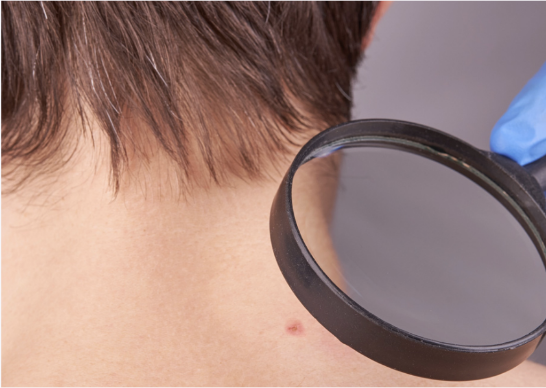Everything You Ever Wanted to Know About Skin Checks but Not Sure Who to Ask
If you are wondering about having a skin check but are not sure how it all works, this article will hopefully encourage you to pick up the phone and book an appointment soon! Having a full skin check is fast, painless and is usually covered by your insurance if you have any suspicious skin lesions. Here’s what else you might want to know.
How do I get ready on the day of my skin check?
Ideally, come without makeup or nail varnish as your dermatologist will need to examine all of your skin and nails. During the exam, you will be asked to undress to your underwear. If you need to wear makeup, bring along what you need for touch-ups, since your doctor may need to remove some for a better look at the skin. It is often helpful to take a quick look at your own skin first so you can point out any new growths or areas of concern to your dermatologist specifically.
Do I need to be totally undressed during the examination?
When we say skin check, we do mean all of your skin will be examined by your dermatologist with specialised magnifying tools. The patient is usually in their underwear, and the undergarments moved around to examine all parts of the skin. You will be offered a towel if you feel uncomfortable being just in your underwear. We do not routinely examine the genital skin unless you mention a specific concern. However do remember that we are fully trained and will be most happy to check out any skin lesions that are of concern to you.
What will my dermatologist be looking for?
We are often looking for any new or changing moles or growths. They may be pink, brown, pearly, rough looking lumps or bumps, or open sores that will not heal. Small rough areas over the face, forearms, or hands may be signs of precancers. Moles that are irregular or have unusual or uneven colours, or a large size could signal a melanoma. Lastly, we are often looking out for a mole or skin lesion that looks different from everything else around it.
Do I need to tell my dermatologist about previous sunburns or sunbed use?
Your dermatologist will usually ask you a series of questions, including:
Have you noticed anything new or changing on your skin?
Have you or a family member had a skin cancer diagnosed in the past?
Have you had sunburns in the past or used sunbeds?
Do you wear a sunscreen daily?
Each of these factors can increase the likelihood of skin cancer, and help your dermatologist work out your risk.
I have so many moles. Should I be worried about them?
Most small brown moles are harmless. They may be flat, dome shaped or bumpy looking. Some people may be genetically predisposed to have a lot of moles. However, sun exposure can also trigger new moles. We pay special attention to moles because sometimes these can change and melanoma (a dangerous type of skin cancer) may arise from an existing mole. If you have >50 moles on your body, you may be at a higher risk of developing melanoma. If you have a family history of melanoma, you should also be more vigilant and undertake annual skin checks.
What happens if I have an abnormal looking mole or skin growth?
If you have a clinically abnormal mole or growth, then a simple test known as a biopsy needs to be done. It is a quick test that takes 5-10 mins and can be done immediately after a quick numbing injection. 1-2 stitches are usually applied to close the wound and this will heal in 1-2 weeks. The skin is then sent to a specialised lab to be examined under the microscope by another dermatologist.
Finally, a skin check really is a quick and safe way of ensuring good skin health. Everyone should have a skin check annually, especially if you are fair, have a family history or have new or changing skin lesions.
